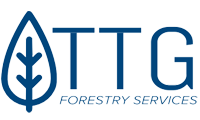| HOME > News > |
Friday, Aug 30, 2013 12:12pm


The mourning dove is one of the most widely distributed and abundant birds in North America. It is the most popular game bird hunted in 38 of the lower 48 states. More mourning doves are harvested than all other migratory game bird species combined.
To help make appropriate management decisions, wildlife managers need current and accurate data on the species being managed and harvested. Banding mourning doves provides information on survival rates, harvest rates, reporting rates and their movements. It is an important element to understanding mourning dove population dynamics and the effects of annual hunting regulations on mourning dove populations.
The hunter is a critical link in this important national mourning dove banding study. Approximately 50 percent of the banded mourning doves harvested are reported. Hunters can help by checking the legs of mourning doves encountered for a silver band, or “bracelet.” It is hoped that with the help of hunters, banded mourning doves will reach the “trophy” status of banded waterfowl, which have a reporting rate of approximately 80 percent. Reporting information is in small print on each band. If a banded mourning dove is harvested, please call 1-800-327-BAND (2263) to report it. Most banded birds are reported online at www.pwrc.usgs.gov. Once at the site, select “Bird Banding Laboratory.” Hunters are not required to send in the band and may keep it as a souvenir.
A national mourning dove banding program provides important data necessary for a long term informed harvest management strategy. The strategy is envisioned in the U.S. Fish and Wildlife Service “National Mourning Dove Strategic Harvest Management Plan.” The plan requires development of demographic population models which depend on estimates derived from mourning dove banding data. By reporting banded doves, hunters are participating in a very important national research project to ensure the continued conservation of this magnificent game bird.
